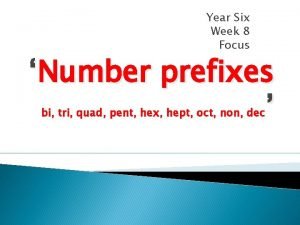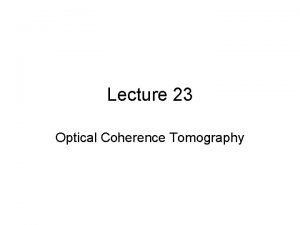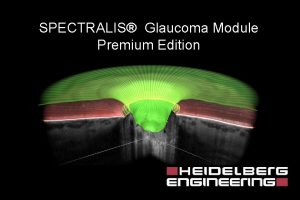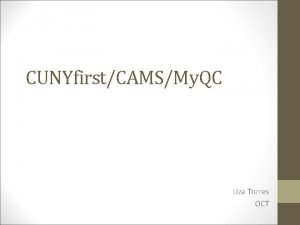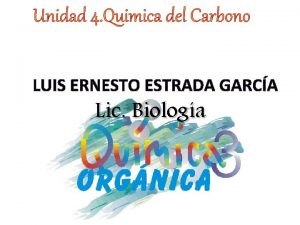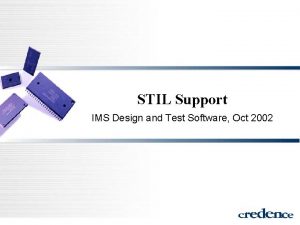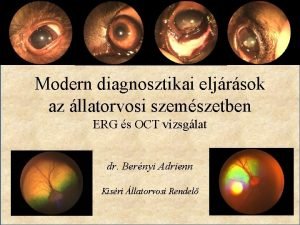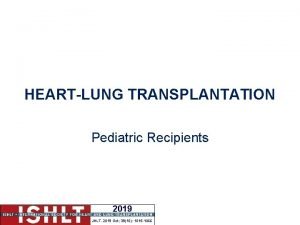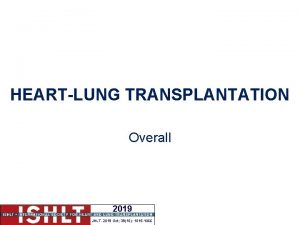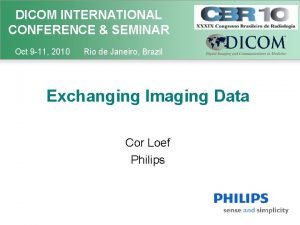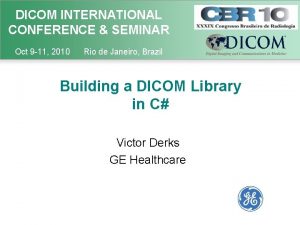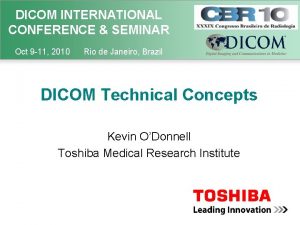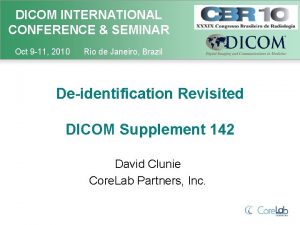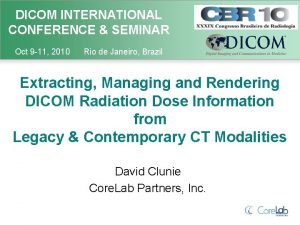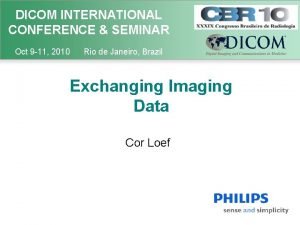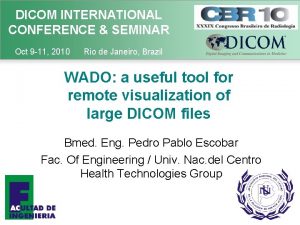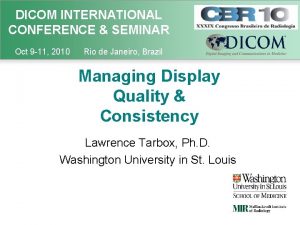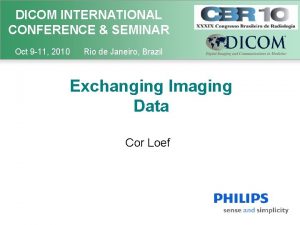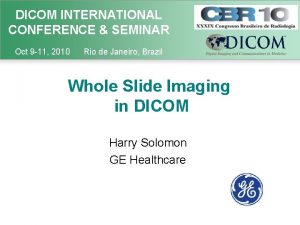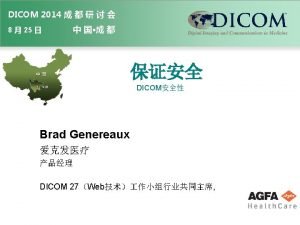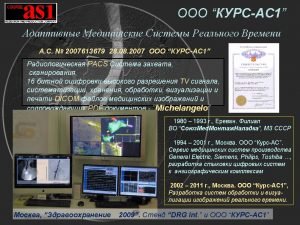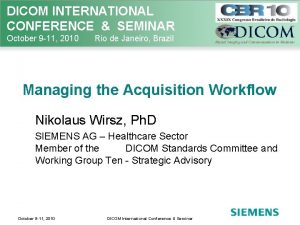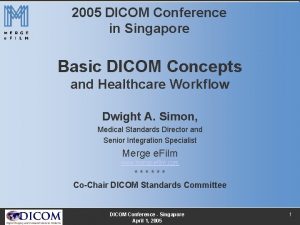DICOM INTERNATIONAL CONFERENCE SEMINAR Oct 9 11 2010


















- Slides: 18

DICOM INTERNATIONAL CONFERENCE & SEMINAR Oct 9 -11, 2010 Rio de Janeiro, Brazil Keeping up with DICOM Harry Solomon GE Healthcare

DICOM is not Static DICOM first published in 1993 Extended regularly to meet the expanding needs of Medical Imaging: - Multi-slice CT 3 D Ultrasound Web-based PACS USB Memory Sticks Clinical Measurements Radiation Dose Reporting Image Registration & Segmentation Computer Aided Detection/Diagnosis and Many, Many More. . .

DICOM Change Process Supplements for major changes – – New object types, new services, new compression schemes About 10 / year Developed by Working Groups Require Work Item approved by DICOM Standards Committee Change Proposals for minor corrections – About 100 / year – Anybody can submit – Backward Compatibility: Avoid changes that break existing implementations Consolidated edition published every year – Most recently, January 2010 – Available free at DICOM web site – Vendors responsible for monitoring final text changes

DICOM Supplements

Working Groups Modality, clinical domain, or function specific teams, assigned to develop Supplements or Change Proposals WG-01: Cardiac and Vascular Information WG-15: Digital Mammography and CAD WG-02: Projection Radiography/Angiography WG-16: Magnetic Resonance WG-03: Nuclear Medicine WG-17: 3 D WG-04: Compression WG-18: Clinical Trials and Education WG-05: Exchange Media WG-19: Dermatology WG-06: Base Standard WG-20: Integration of Imaging and Info Systems WG-07: Radiotherapy WG-21: Computed Tomography WG-08: Structured Reporting WG-22: Dentistry WG-09: Ophthalmology WG-23: Application Hosting WG-10: Strategic Advisory WG-24: Surgery WG-11: Display Function Standard WG-25: Veterinary Medicine WG-12: Ultrasound WG-26: Pathology WG-13: Visible Light WG-27: Web Technology for DICOM WG-14: Security

DICOM Change Process Development of a Supplement : Work Item Proposal – Reviewed / Approved by DICOM Standards Committee Working Drafts – Developed by Working Groups, reviewed by DICOM WG-06 Public Comment – Reviewed / Approved by DICOM WG-06 – Published for 45 -day Comment Period Letter Ballot – Reviewed / Approved by DICOM WG-06 – Voted on by DICOM Members Final Text / Standard – Finalized by DICOM WG-06 – Effective immediately; consolidated during next publication …typically a 1 -2 year process

Maintaining Compatibility Extension, not “Versioning” DICOM is a family of SOP Classes – – It’s just “DICOM”; Not DICOM 3. 0, 3. 1, etc. Conformance is to SOP Classes, not to a ‘version’ of the Standard New SOP Classes are added; old SOP Classes don’t change Most applications continue to support older SOP Classes when supporting new ones Association Negotiation – – Software can determine if two systems are compatible Happens each time two DICOM systems open an association (connection) They negotiate which SOP Classes will be used, and how (e. g. Transfer Syntax) Based on what each system supports and/or prefers DICOM Conformance Statement (DCS): – Humans can determine if two systems are compatible – When purchasing, compare the new system to your currently installed systems “This product supports this list of SOP Classes; here are some details about how the SOP Classes have been implemented and how the system behaves when it uses them”

SOME RECENT ADDITIONS TO DICOM

Enhanced Multi-Frame Images “ 2 nd Generation” objects for most modalities – Common approach to multi-frame, multi-dimension objects – New Attributes (Private->Public) • Acquisition details, Clinical details – New SOP Classes for CT, MR, XA, RF, PET, 3 D-XR, 3 D-US New modalities start with this as baseline – Breast Tomo, Ophthalmic OCT, Intravascular OCT, Whole Slide Benefits – – Convenient handling of 1000+ slice studies Faster transfers (orders of magnitude) Advanced structure for faster, advanced display Support for modern/advanced protocols • e. g. in CT/MR: cardiac, gating, perfusion, diffusion, angio, fluoro, multistack spine, spectroscopy, functional imaging, color, raw data, …

Multi-frame Architecture Using Single Frame Objects N Objects, N Headers Using Multi-Frame Objects N Frames, One Header Fixed Header Per-frame header Dimension data Pixel data

Segmentation New SOP Classes – Segmentation Image • Based on Pixels / Voxels • Binary (1 -bit/pixel) or fractional (probability or occupancy) – Surface Segmentation • Based on 3 D Mesh May record multiple segments representing: – Tissue type, organ surface, etc. Example use: – Workstation analyzes images; segments tumor – Segmentation object is stored to the PACS – Display station retrieves/displays segmentation; perhaps for surgical planning

Registration New SOP Classes – Rigid/Affine Registration – Deformable Registration – Spatial Fiducials Records one or both of: – Transformations to map one or more data sets (e. g. images) into the space of another data set – Fiducials used for the registration Example use: – Modality or workstation spatially registers two datasets – Registration object is stored to the PACS – Display station retrieves and applies the transformation; displays fused images

Dose Reporting New SOP Class – X-Ray Radiation Dose Structured Report – Templates for Projection X-Ray, Mammography, and CT Records individual Irradiation Events – Does not depend on creation of digital images – Can be correlated with images for dose mapping – Driven by work of IEC and Euratom IHE Radiation Exposure Monitoring Profile – Facilitates testing and deployment Example Use: – Modality stores Dose Reports to PACS – Dose Monitoring system retrieves reports and generates weekly analysis of departmental dose; monitors compliance with policies

Application Hosting New concept in DICOM: Portable applications with standard API to host – Communication between independent components on same system, not communication between systems Technology: – Web Services / WSDL – Application launch, progress/status, suspend/cancel, complete – Access components of DICOM objects, or entire objects Use cases: – Molecular imaging agent-specific processing; translational research – Third-party computer-aided detection or analysis applications – New SOP Classes

New Domain: Ophthalmology New SOP Classes Ophthalmic Optical Coherence Tomography, Lensometry, Autorefraction, Subjective Refraction, Keratometry, Visual Acuity, Spectacle Prescription, Ophthalmic Axial Measurements, Visual Field Static Perimetry Limited prior standardization – DICOM provides robust, consistent framework for imaging and measurements

New Domain: Anatomic Pathology New SOP Class – Whole Slide Imaging : hierarchical tiled approach supports multi-gigabyte images New module – Specimen Module : applied to all modalities that might image specimens – Allows management of specimens in workflow (Modality Worklist and Modality Performed Procedure Step) Use cases: – Digital Pathology – imaging of whole slide allows softcopy review, remote consultation, computer-aided analysis – Radiology-Pathology Integrated Workflow (cancer diagnosis)

How can you keep up? dicom. nema. org Download the current issue of the Standard (free) – Both PDF and Word – Both normal and “Diff” version (showing changes from previous issue) Monitor and Implement CPs (Change Items) – Keep your product current Review New Supplements – Current documents are visible at all stages of the process – http: //www. dclunie. com/dicom-status/status. html Review the DICOM Strategy Document – Activity reports from all Working Groups Attend the next DICOM International Conference and Seminar – Stay tuned!

How you can contribute! Ask questions/discuss on the DICOM Newsgroup – http: //groups. google. com/group/comp. protocols. dicom Submit Change Proposals – if you find a gap, error, inconsistency or confusing text – mailto: hclark@medicalimaging. org Respond to Supplements released for Public Comment – Feedback is particularly welcome during Public Comment period – http: //www. dclunie. com/dicom-status/status. html Join DICOM – Membership categories for users, vendors and national bodies – mailto: hclark@medicalimaging. org Participate in the DICOM Standards Committee and Working Groups – Submit new Work Item proposals – Help develop new Supplements
 Customer experience management conference 2010
Customer experience management conference 2010 Hex hept oct non dec
Hex hept oct non dec Story of mahatma gandhi
Story of mahatma gandhi Systemy liczbowe
Systemy liczbowe Oct 3 1993
Oct 3 1993 Low na
Low na Hex hept oct non dec
Hex hept oct non dec Sunset on october 31st
Sunset on october 31st Premium sanitas
Premium sanitas Visante oct
Visante oct Cuny cams
Cuny cams Grupo funcional importancia
Grupo funcional importancia Stil oct
Stil oct General formula of alkane
General formula of alkane What is chemistry
What is chemistry Oct vizsgálat ára
Oct vizsgálat ára Prop but
Prop but Jhlt. 2019 oct; 38(10): 1015-1066
Jhlt. 2019 oct; 38(10): 1015-1066 Jhlt. 2019 oct; 38(10): 1015-1066
Jhlt. 2019 oct; 38(10): 1015-1066

